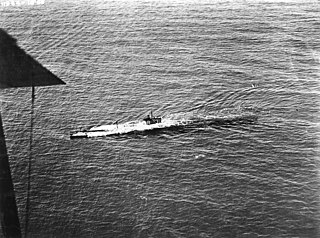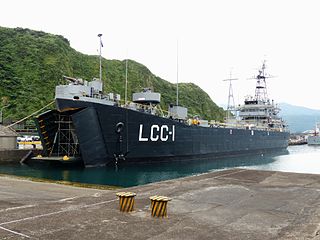Related Research Articles

USS McCall (DD-28) was a Paulding-class destroyer in the United States Navy during World War I and later in the United States Coast Guard, designated CG-14. She was the first ship named for Edward McCall.

The first USS Monaghan (DD-32) was a modified Paulding-class destroyer in the United States Navy during World War I and later in the United States Coast Guard, designated (CG-15). She was named for Ensign John R. Monaghan.

The first USS Henley (DD-39) was a modified Paulding-class destroyer in the United States Navy during World War I and later in the United States Coast Guard, designated as CG-12. She was named for Robert Henley.

The first USS Jouett (DD-41) was a modified Paulding-class destroyer in the United States Navy during World War I and later in the United States Coast Guard, designated as CG-13. She was named for Rear admiral James Edward Jouett.

The first USS Jenkins (DD-42) was a modified Paulding-class destroyer in the United States Navy during World War I. She was named for Rear Admiral Thornton A. Jenkins.

USS R-3 (SS-80) was an R-class coastal and harbor defense submarine of the United States Navy. Her keel was laid down on 11 December 1917 by the Fore River Shipbuilding Company in Quincy, Massachusetts. She was launched on 18 January 1919 sponsored by Mrs. Charles G. McCord, and commissioned on 17 April 1919 at Boston, Massachusetts, with Lieutenant Commander Allen Herschel Guthrie in command.

USS Edwards (DD-265) was a Clemson-class destroyer in the United States Navy and transferred to the Royal Navy where she served as HMS Buxton (H96) and later in the Royal Canadian Navy during World War II.

The first USS Swasey (DD-273) was a Clemson-class destroyer in the United States Navy and transferred to the Royal Navy as HMS Rockingham (G58).

The first USS Meade (DD-274) was a Clemson-class destroyer in the United States Navy and transferred to the Royal Navy as HMS Ramsey (G60).

USS Moody (DD-277) was a Clemson-class destroyer in the United States Navy in commission from 1919 to 1922 and from 1923 to 1930. She was named for Justice William Henry Moody.

USS Breck (DD-283) was a Clemson-class destroyer in the United States Navy following World War I. She was named for Joseph Berry Breck.

USS Isherwood (DD-284) was a Clemson-class destroyer in service with the United States Navy from 1919 to 1930. She was scrapped in 1931.

The first USS Lardner (DD-286) was a Clemson-class destroyer in service with the United States Navy from 1919 to 1930. She was scrapped in 1931.

USS Auburn (AGC-10) was a Mount McKinley-class amphibious force command ship, named for the hill Mount Auburn just northwest of Cambridge, Massachusetts. She was designed as an amphibious force flagship, a floating command post with advanced communications equipment and extensive combat information spaces to be used by the amphibious forces commander and landing force commander during large-scale operations.

USS Mount Olympus (AGC-8) was a Mount McKinley-class amphibious force command ship, named for the highest peak in the Olympic Mountains of the State of Washington. She was designed to be an amphibious forces flagship—a floating command post with advanced communications equipment and extensive combat information spaces to be used by the amphibious forces commander and landing force commander during large-scale operations.

USS Schuylkill (AO-76), originally named the SS Louisburg, was a Type T2-SE-A1 Suamico-class fleet oiler of the United States Navy.

USS Teal (AM-23/AVP-5) was a Lapwing-class minesweeper acquired by the United States Navy for the task of removing naval mines from minefields laid in the water to prevent ships from passing. The ship entered service in 1918, was converted into a seaplane tender in the 1920s and took part in World War II, serving primarily in Alaskan waters. Following the war, the ship was decommissioned and sold in 1948. Teal was named after the teal, any of several small, short-necked, river ducks common to Europe and the Americas.

USS Dukes County (LST-735) was an LST-542-class tank landing ship built for the United States Navy during World War II. Named after Dukes County, Massachusetts, she was the only U.S. Naval vessel to bear the name. In 1957 she was decommissioned and leased to the Republic of China. In 1962 she was commissioned into Republic of China Navy service.
Two ships of the United States Navy have been named Ancon.

USS George A. Johnson (DE-583) was a Rudderow-class destroyer escort serving with the United States Navy from 1944 to 1946. From 1946 to 1957, she was used as a Navy Reserve training ship. She was scrapped in 1966.
References
- This article incorporates text from the public domain Dictionary of American Naval Fighting Ships .The entries can be found here and here.
- ↑ Gary P. Priolo (11 November 2005). "AGC-10 Auburn". Navsoure.org. Retrieved 2008-01-16.
- ↑ DANFS says Kitkay; Navsource says Kathay.